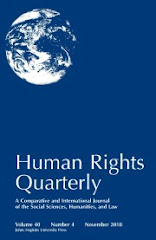International investment law (IIL) is unlike any other sub-field of international law. Its unique features continue to puzzle observers. Two general themes recur. First, why did countries ever agree to so substantially limit their sovereign powers over foreign investors and, most strikingly, to open themselves up to direct claims in investor-state arbitration? Second, how does one best classify or analogize the "hybrid" of IIL and how can IIL survive in its current constellation of 2'833 bilateral investment treaties (BITs), without a controlling multilateral treaty or institution or appellate court? This article draws on complexity theory and the notion of complex adaptive systems to offer an alternative, richer account of IIL. Approaching IIL as a complex adaptive system (CAS) allows us to better understand how IIL (i) emerged out of small, incremental and often accidental steps, (ii) operates as a largely self-organizing, decentralized system made up of many interacting components and (iii) stabilizes but also changes and evolves through a series of local, sub-optimal quasi-equilibria, highly sensitive to initial conditions that can be disturbed by both seismic events or major crises and minor mutations. The insights thus provided should also help participants in IIL to develop interventions or reforms that are more likely to be effective, in casu relatively small tweaks or adaptations which may have major repercussions. Seeking the edge of chaos, therefore, is not seeking disorder or randomness but the right balance between order and flexibility. This perspective should give pause to lawyers, generally critical of fragmentation and decentralisation, and intuitively in search of order and central authority. Through the lense of complexity theory, IIL, with all its imperfections, and contrary to conventional wisdom, may not be international law’s most pathological sub-field in need of top-to-bottom reform. Though far from optimal, it may be an organizational life form more similar to species that have survived evolutionary biology and, in this sense, be a model that other legal regimes may want to copy from.
Monday, June 3, 2013
Pauwelyn: At the Edge of Chaos? Emergence and Change in International Investment Law
Joost Pauwelyn (Graduate Institute of International and Development Studies - Law) has posted At the Edge of Chaos? Emergence and Change in International Investment Law. Here's the abstract:





